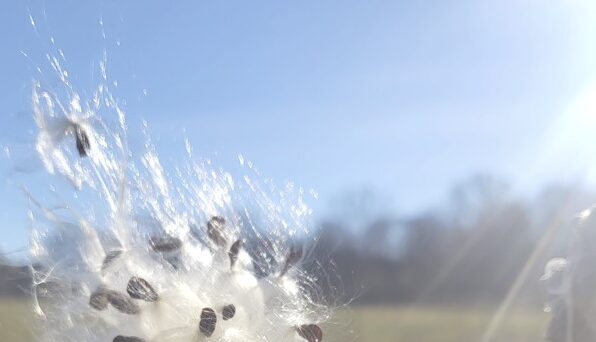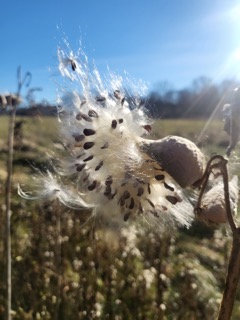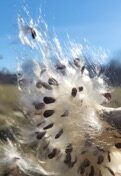
About Kate Reese Hurd,
the Art of Eurythmy and Poetic Speech
Photo: Marc Clifton
About Kate Reese Hurd
Kate holds degrees in English literature and music and is a eurythmy graduate (1985). She has sung in choruses and chamber groups, has played a number of musical instruments and served as a pianist for four years at the School of Eurythmy in Chestnut Ridge NY.
In 2016, she completed and published an in-depth manual on the speech sounds and their gestures: The Speech Sound Etudes, Volume I: Revelations of the Logos – Poetic miniatures for sounding our language: a body of speech-work for speakers, actors, eurythmists, poets, writers, singers, teachers, therapists. It is available on request (or inquire at the Rudolf Steiner Library in Hudson NY or at the Turose Shop in Ghent NY).
In late 2012 she had begun to work intensively on this body of speech sound etude-studies that are meant to be spoken by heart – sets of sentences for each vowel and consonant. She honed them thoroughly through using them to evoke the movement-impulses of the sounds. They are a key element in her research on the objective foundation of eurythmy as an expression of the WORD as poetic speech. Her efforts have been so successful that in 2014 she made a detailed report on this direct approach to the eurythmy gestures: The Speech Sound Etudes: Feeling the Gestures and Finding the Figures. This report is posted at the EANA website in the artistic category and is also available as a booklet. She is slowly at work on miniatures for the combination-consonants (e.g., br, fl, sn, etc.) as well as for the vowel-to-consonant soundings.
In addition to this report and several articles on speech eurythmy, Kate began a detailed research report on music eurythmy: Singing and Jumping Opens the Way to a Vital Music Eurythmy Foundation. The first half of “PART I, The Archetypal Scale and Its Disappearance – a Memoir,” is posted at the EANA website, artistic category (2019). The autumn 2018 EANA Newsletter includes a description of this four-part report which is still in progress. Her first article on the musical branch of eurythmy came out in spring 2019, followed by several other articles (as listed at the end of the Writings page here). Some of the content of these is now included in the first part of PART III of the Singing and Jumping report, which is also posted at the EANA website together with all of “PART IV: The Singing and Jumping Exercises – Real Sound-Experiences Lead to Real Gestures” (2022).
Kate’s intensive report on poetic speech in pentameter, Revealing the Music of Pentameter: Putting Shakespeare Through His Paces, was posted at the EANA website, artistic category (2021).
Since 2015, Kate has been reciting poems, pentameter and the poetic miniatures at poetry gatherings when she can. She has now established this website for easier access to her reports, articles and materials; and she is orienting toward making full use of this new foundation in speech and movement to prepare and present pieces in eurythmy.
To read more about the life path that led Kate to this work, see:
Author-ComposerBio,091424,pdf

About Eurythmy and the Art of Poetic Speech
What is the Art of Eurythmy?
Where Does Poetry and Poetic Speech Come From?
The Art of Poetic Speech: The Syllable and the Formative Structure
What is the Art of Eurythmy?
The etymology of the word, ‘eurythmy,’ is: ‘eu’ – good, well or true, plus ‘rhuthmos’ – proportion, measure, recurring motion, rhythm. The name is therefore taken to refer to harmonious movement. But many forms of movement can be characterized as being a kind of eurythmy when they are harmoniously coordinated, such as in modern dance and ballet. But the art of movement that Rudolf Steiner began to usher into being in 1912 is not this kind of eurythmy. Its harmony is to spring from a different source altogether, as is pointed to in my report on The Speech Sound Etudes.
In the expression of poetry through eurythmy movement, the harmony to be expressed by the performers is to have its origin in the nature of our own being and of all living things. And in specific, it is to spring from the fact that each performer has been able, independently and together with each other, to grasp in spirit the movement-impulses of the speech sounds – the vowels and consonants. these distinct impulses are expressions of the life forces, the formative etheric forces through which the Logos – the Word – lays hold of the mineral world to continually create and maintain the orderly organic form and functioning of plants and animals, and of our own form and soul nature as human beings. The aim in eurythmy is the harmonious expression that is possible when through direct, objective, inner perception and cognition of this higher reality, which is all around us and in us but not perceptible to our five lower senses, eurythmists grow to meet each other within the moment-to-moment necessities of this reality as it expresses itself in the elements of poetic speech – and of music, or song-without-words. Therefore, this eurythmy is not self-expression, nor is it to be a coordinated set of agreed-upon movements or a catalog of inherited gestures, no matter how pleasing or personally meaningful these might be. Nor is it a kind of mime. In expressing the sound-architecture of the gesture-impulses of the sounds themselves in their forming of words – of sounding-meanings – we make visible the processes at work in nature, in poetic speech and in our soul experiences.
In music eurythmy, our goal is to make visible our objective and richly-differentiated experience of our own singing of melody. All manner of musical relationships are borne by each musical tone: its role in the scale to which it belongs, its relation to other tones as a temporary upper or lower tone in the movement of melodic intervals, its membership in three different triad harmonies that it holds as potentials that ‘sound’ to inward perception in the context of the other tones of the melody, its role in the melody’s movement in time, in the meter, and in rhythmic motives, etc. Our task as eurythmists is to express all of these inaudible relationships that are present even in a single line of melody.
In eurythmy performance, a speaker or musician will express the audible flow of the poem or piece of music in unison with what the eurythmist(s) present as movement. Together, they bring out the key features of each piece in the creation of an artistically-integrated whole. This gives the onlookers the best chance of grasping the inward union between the audible expression and the silent eurythmy expression. The eurythmists’ role is to express their richly-known experience of the inaudible elements of poetic speech or of music as discovered through their own speech, singing and movement activity and research.
Because eurythmy can bring the vitality of the formative forces forth through the speech sound gestures and through the gesture-expression of the intervals and other elements of musical experience, it is included in the Waldorf school pedagogy to foster the healthy development of children; and it is applied in modified form as therapy for disease conditions and developmental needs. And when extended in the broadest ways, eurythmy’s reinvigorating power can revitalize not only our language and musical expression, but our entire earthly realm.
In his introductions to eurythmy performances Rudolf Steiner explained that the beginnings of a poem are found in the sensing of a “rhythmic motion,” an “inner flow” which is only afterward “embodied in a literal content.” It is the poet’s “shaping and forming” of this flow that leads to the creation of a sonnet, for instance; for “the meter, rhythm and structure are really the things that matter.” The poet’s work is in “pursuit” of “an elusive melody, or some harmonious musical element,” which is then embodied in the structures, sentence forms, meter, and “all the artistic elements of language,” endowed with “the melodic quality, the imaginative, pictorial element, … the sculptural, colorful elements.”*
Where Does Poetry and Poetic Speech Come From?
And in Lecture VI in the volume, Poetry and the Art of Speech, Rudolf Steiner brought attention many times to the fact that Goethe rehearsed his plays, written in pentameter and tetrameter (and I find also hexameter), much as a conductor would a piece of music (Italics are added):
“Over the last decades recitation and declamation have been steered more and more into a predilection for endowing with form the meaning-content of the words. A stress on the word-for-word content has become increasingly conspicuous.”
“Our times have little understanding for such a treatment of the spoken word as was characteristic of Goethe, who used to rehearse the actors in his plays with special regard for the formation of speech, standing in front of them like a musical conductor with his baton. The speech-formation, the element of form that underlies the word-for-word content – it is really this which inspires the true poet as an artist.”
PoeticFlow,RSteiner,100224,KRH,pdf
*(The excerpts in the first column here are from An Introduction to Eurythmy, Anthroposophic Press, Spring Valley NY, 1984. See: III, p. 15, Dornach, Switzerland, Aug. 11, 1919; VI, p. 33, Dornach, Aug. 15, 1920; VII, p. 45, Dornach, Sept. 17, 1922; and IX, pp. 51-52, The Hague, The Netherlands, Nov. 2. 1922.)
The Art of Poetic Speech
The Syllable and the Formative Musical-Metrical Structure
From Rudolf Steiner’s lectures on Poetry and the Art of Speech:
“The poet has to make use of words, since these are after all the instruments of human speech: but in making use of words he necessarily deserts his proper artistic domain. He* can only achieve his aim if he leads the word back to syllable-formation. In the quantities, meters and weight of syllable-formation – this is the region where the word has not yet become word, but still submits to the musical, imaginative and plastic, to a speech-transcendent spirituality – there the poet holds sway.”
“And when the poet has to make use of words, he feels inwardly how he has to lead word-formations back to the region that he left under the necessity of passing from syllable to word. He feels that through rhyme, through the entire configuration of the verse, he must again make good what is lost when the word abandons the concrete quantities and weight that belong to the syllable, and round it out artistically, imparting form and harmony.”
… “The declaimer or reciter, as the interpreter of the poet’s art must give special attention to what I have just described. He has to conduct what comes before him as a poetical composition, which obviously communicates through words, back to quantity, meter and the weight of the syllables.”
… “What then flows out into the words has to be consciously rounded out so as to accord with the verse-structure and rhyme. In our own age, with its lack of artistic feeling, there has arisen a curious kind of declamatory-recitative art – a prosaic emphasis on the prose-sense, something quite unartistic. The real poet always goes back from the prosaic or literal to the musical or plastic.”
Syllables,Meter,RSteiner,091424,KRH,pdf
* In Rudolf Steiner’s work, ‘he’ always refers to all human beings without regard to gender.

◇ ◇ ◇ ◇ ◇ ◇ ◇